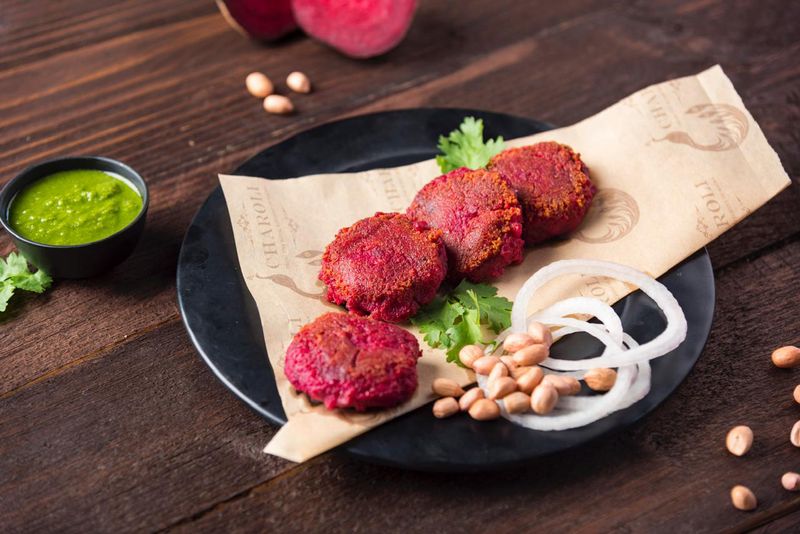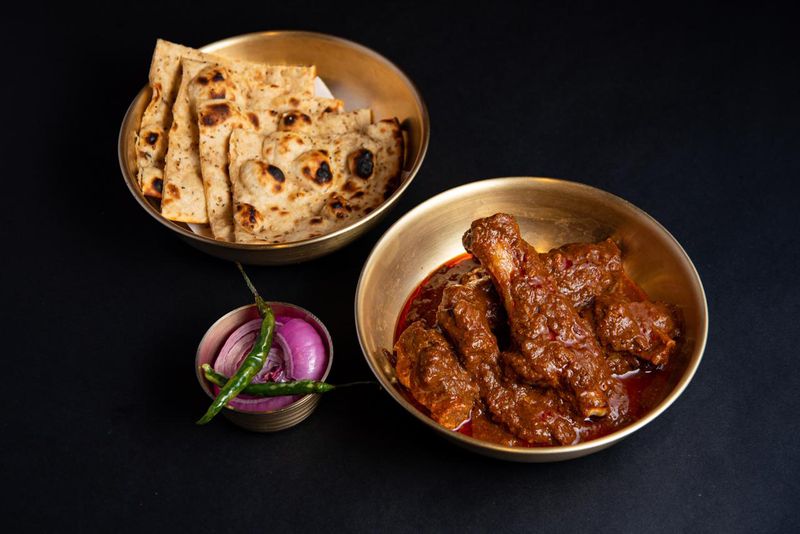Chef Anuradha Medhora is here to set the record straight - the food of the Maratha dynasty is beyond the spicy Kolhapuri fare which is what people think it is. Through her venture Charoli Foods, she recently organised a pop-up event titled, ‘Rise of the Marathas’ at Ishaara, aimed at enlightening diners about the expansive Maratha empire. Stretching from Attock to Cuttack at its peak, this empire's gastronomic heritage, typically guarded within royal kitchens, was brought to patrons in a format far removed from the expected spicy fare.
Here we are talking about the royal kitchens of Thanjavur, Dewas, Mudhol, Baroda, and vegetable gardens of Lal Baug, with influences of Marathi cuisine that tastes familiar yet piques curiosity. With tea time favourites of Maharani Sharmishtha Devi’s Batla Nevri to Upas Vade, a speciality from the Puars of Dewas, mutton kebabs from Thanjavur to kaju curry from royal kitchens Of Ghorpade of Mudhol and the pulao from the Gaekwads of Baroda, Medhora urges diners to step into the past and peek into the sheer expanse of the Maratha empire that went way beyond the borders of modern-day Maharashtra. Ask what kind of dining experience she is trying to create for guests with these Maratha-inspired menus, she says, “I want people to go back having indulged in the many flavours of the Maratha repertoire and compare notes as to how unique the taste of the Baroda kitchens were vs the Tanjavore Royal kitchens are.”
The chef's inspiration to create a menu inspired by the Marathas stems from their significant historical impact on the Indian subcontinent. Medhora says, “I have been asked on numerous occasions how I speak such fluent Marathi even though I grew up in Madhya Pradesh. To which I immediately break into a history lesson on how it was in fact a Maratha state in days yore and hence the fluent Marathi. The story of the Marathas is fascinating, and the food is absolutely phenomenal and is beyond the spicy Kolhapuri fare which is what people think it is.”
Talking about the menu and how it can help raise awareness about Maratha history and culture, the chef believes that food in mind has a way of weaving a story through its flavours, spices and techniques that makes one aware of the similarities and the differences in one’s culture. It is in fact the most agreeable lesson in history and culture of any dynasty or civilisation. Medhora elaborates, “We are serving classic Maratha recipes of different Maratha dynasties in the hope that when someone reads Aundh chi puran poli or Mudhol chi Kaju curry we hope that people pick up their phones and check where this principality is. And in doing so they would have learnt a little more about the mighty Marathas.”
When crafting these dishes, the chef’s upbringing in Indore, immersed in a family deeply passionate about food and culinary history, has been instrumental. She recalls, “I have been fortunate enough to have grown up in Indore in a family that enjoyed their food and documented a lot of the culinary history. While making these dishes there are zero short cuts. The masalas are fresh, the processes are accurate and the flavours are authentic. The modernity in these dishes is only in the way we present them."

Not to mention, Maratha cuisine is known for its influences from various regions. So while the Marathas carried recipes that reminded them of home they also adapted and adopted some of the local culinary traditions along the way. Elaborating on some of the specific regional influences that reflect in her menu, chef Medhora says, “We are serving the Upas Vadas from Dewas and the Batla Nevris from the white maharani of Indore’s kitchen. We are also serving a Maratha favourite – the Baroda Pulav and the saffron-laden Sangli Komdi Kebabs. The Mutton Barbat of Gwalior which is cooked on Dussehra in every Maratha house and the nutty Sangli Bharli Vangi. Every dish has something that makes it unique to that particular Royal house and each dish has a unique story.”
The Marathas were known as warriors. Their lifestyle or military campaigns did influence the development of their cuisine. Medhora explains, “Unlike any other royal cuisine in our country the Maratha culinary repertoire is relatively more rustic. It is more bold in flavour but very practical in approach. The flavours of the Marathas are robust yet not too rich, it is very balanced and yet enormously flavourful, it is practical and sometimes reminds you of their roots in the Sahyadris and yet some of it has the flavours of Shiraz. That is the complexity of the warrior cuisine of the Marathas.”

Medhora assures that none of the dishes including the way the shrikhand has been made would have ever been eaten in a restaurant. All of these recipes have only been cooked behind closed palace doors and savoured only by royalty with ingredients such as the goda masala, kala masala, which are all unique to the cuisine.
However, she stresses on how the purity of the ingredients that are now available aren’t at par with the quality of the past becomes a challenge in recreating historical dishes, “Cooking in the correct utensils and then using the correct cuts of meat depending on what is being cooked. All of it is a challenge and then comes the laborious work involved in finally cooking the said dish in the correct way which can sometimes take up to an entire day of slow manual work.”
Now let’s talk about our favourites from the spread, shall we? The slow cooked mutton keema marinated in a green masala and desi ghee was a standout dish enjoyed by Aba Saheb. Chef recalls, “Hirva kheema was a favourite of Aba saheb, of Dewas senior. Mutton keema was slow cooked in a hirva vaatan on a slow flame. At home my uncles would refer to this dish as “Aba saheb Dewas cha hirva keema”, translating to "make Aba saheb of Dewas’s green keema.”
Next up, LalBaug Survedar – a rustic-style chicken curry made is a recipe from the Holkar Royal kitchens. “A mention of this has been made in the book written by HRH Richard Holkar. However, the recipe that I have is from Lal Baug Palace kitchens of HRH Tukoji Rao Holkar and is slightly different where fresh herbs and spices were used from the palace kitchen gardens," explains the chef. Lastly, curious about the Baroda Pulao and what makes it different from the rest, we ask which chef calls it ‘pièce de résistance’ at any Maratha table, “It is loved from Baroda to Nagpur to Kolhapur and all the way to Gwalior. It is a mutton pulao layered with fresh grated coconut, coriander and then smoked.”
Elated by the positive response to the menu, the chef is considering establishing a permanent Maratha section at Charoli in the near future.
Disclaimer: The views expressed in the article reflects the author(s) opinions and do not necessarily represent the views of the publisher and editor.


